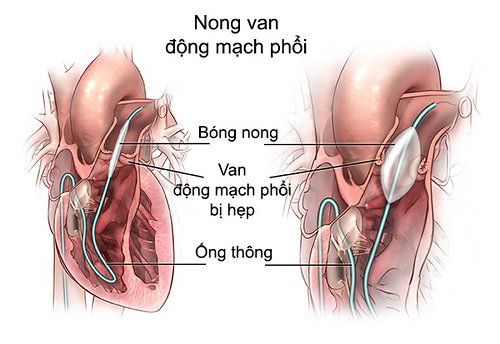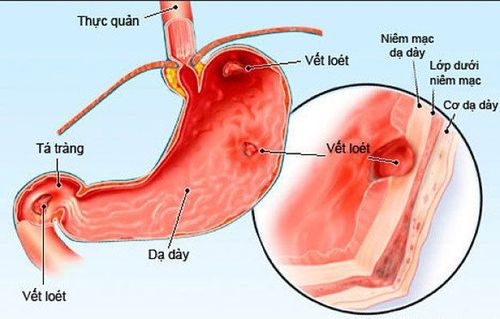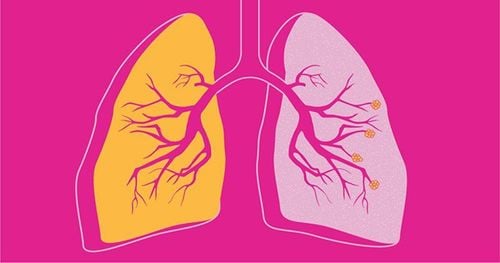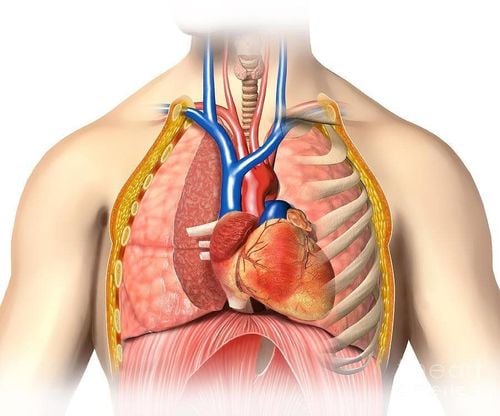This is an automatically translated article.
Laparoscopic pleurectomy is the main and ideal treatment for chronic empyema, after failure of drainage because at this stage, fibrin is deposited in the visceral cavity, gradually forming thick fibrous coating that prevents the lungs from expanding.1. What is laparoscopic peel?
Laparoscopic pleural peel is the mainstay of treatment in cases of chronic empyema and failure of drainage. Empyema is an overflow of pus in the pleural space. Emphysema can occur in the following cases:After infectious disease in the pleura, lung, mediastinum, chest wall, abdominal cavity, sepsis ... After mechanical injury in the thorax due to a procedure Surgery, trauma and chest wounds... Due to bacteria causing empyema such as staphylococcus aureus, streptococcus, pneumococcus, Gram-negative bacteria, tuberculosis bacteria. When the agents cause empyema, it will lead to complications such as:
rupture causing pus leakage through the chest wall, pleural - bronchial fistula, pleural - esophageal fistula or bursting of empyema through the diaphragm. Abdominal. Exhaustion due to prolonged severe toxic infection, sepsis, abscesses of other organs such as brain, kidney... Heart failure, first of all right heart failure. Therefore, laparoscopic decapsulation is the main and ideal treatment for chronic empyema, after drainage failure because at this stage, fibrin accumulates in the visceral leaves. gradually forming a thick fibrous capsule, preventing the lungs from expanding.
2. Indications and contraindications for laparoscopic peel surgery
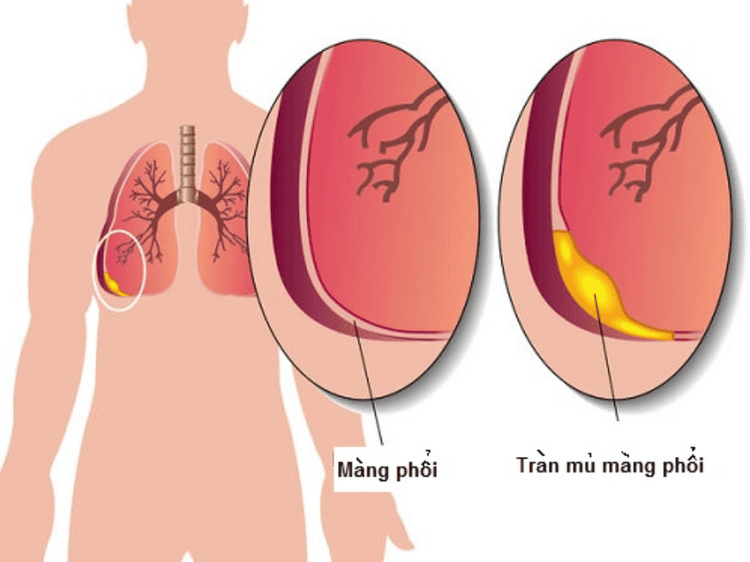
Viêm mủ màng phổi mãn tính là trường hợp có chỉ định mổ nội soi bóc vỏ màng phổi
Chronic empyema Inflammation of the pleura empyema draining solid pus, many complex localized compartments. Emphysema with ineffective pleural drainage, infection, toxicity, prolonged non-expansion of the lung. Contraindicated laparoscopic pleural peel in the following cases:
The patient cannot tolerate prolonged surgery in the state of one lung collapse. Patients with diffuse or progressive pulmonary disease. Patients with bronchial stenosis cause atelectasis. Have coagulation disorders that are difficult to correct; New myocardial infarction, uncontrolled heart failure.
3. Steps to perform laparoscopic peel surgery
Laparoscopic pleural peel is performed according to the following steps:Step 1: Prepare equipment for laparoscopic pleurectomy i such as: Ventilator, continuous negative pressure suction system; Monitor arterial blood pressure, venous blood pressure, oxygen saturation, breathing rate, electrocardiogram; endoscopes; common laparoscopic surgery kits; thoracic surgery kit for conversion to open surgery when needed; operating table, electric knife, lighting system qualified for thoracic surgery.
Step 2: Laparoscopic thoracoscopic surgery requires atelectasis on the affected side by isolating the lung by bronchoscopy. Then have the patient lie on his side, pillow under his back similar to the case of open chest
Step 3: Place trocar according to experience and equipment. The trocar openings should be on the same thoracic opening, with the lowest opening for drainage. When placing a trocar or camera, it is important to avoid perforation into the lung parenchyma in cases where the lung cannot be isolated, causing active atelectasis or the lung is adherent
Step 4: The surgeon aspirates the pus and breaks the adhesive cord to facilitate the treatment. conditions for lung expansion. Next, make an incision in the fibrous capsule to enter between the fibrous capsule and the visceral fascia. It is recommended to remove many capsular caps but not to damage the lung parenchyma because it can cause a lot of bleeding and a pneumothorax that prevents the lungs from expanding
Step 5: Release the parietal leaves, remove most of the pus and pseudomembranous surface, especially the diaphragm. Then, squeeze the balloon to help the lungs expand to the maximum, check for air leaks when the stitches are closed, and then wash them thoroughly before closing the patient's chest.
Step 6: Place at least 2 closed drainage tubes, the small tube is placed on the high chest for irrigation with 1% diluted Betadin solution, the other tube is larger to drain the fluid and the pseudomembranous is placed in the low chest position.
4. Monitoring and managing complications after laparoscopic peel surgery
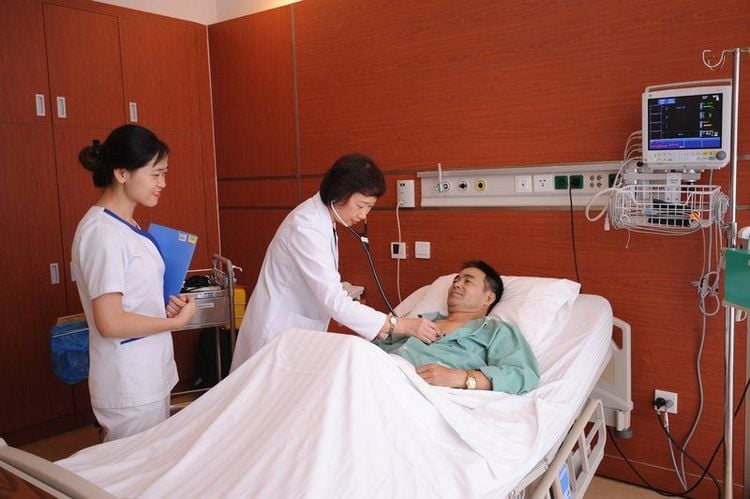
Sau phẫu thuật, bệnh nhân cần được theo dõi các vấn đề như tình trạng chảy máu, sự sinh tồn, thổi bình,...
Monitor the patient's survival, bleeding status. Continuous pleural irrigation for 3-4 days after surgery. Relieve pain, suck sputum to avoid postoperative atelectasis complications. Postoperative intensive respiratory physiotherapy. Blow the bottle to help the lungs expand gradually over time. Maintain antibiotics in case the lungs have fully expanded. The drain is removed after 1 week when the volume is <50ml/day, the fever stops for more than 48 hours, and the signs of infection are gone. Management of complications after laparoscopic pleurectomy:
Closely monitor drainage at recovery, if bleeding is >1000ml or >200ml/hour for 2-3 hours, laparoscopic surgery or thoracotomy for acute hemostasis is required. assist. Collapsed lung causes respiratory failure due to poor drainage, sputum blockage... it is necessary to detect it early, let the patient practice breathing, flutter, loosen phlegm, Pneumonia, infection of the trocar legs, it is necessary to change the dressing, take care of the patient. wound care, antibiotic treatment. Vinmec International General Hospital with a system of modern facilities, medical equipment and a team of experts and doctors with many years of experience in medical examination and treatment, patients can rest assured to visit. and hospital treatment.
To register for examination and treatment at Vinmec International General Hospital, you can contact Vinmec Health System nationwide, or register online HERE.
MORE
What is lobar pneumonia? How to identify and prevent How to take care of a newborn with pneumonia to help them recover quickly Common diseases in the lungs




